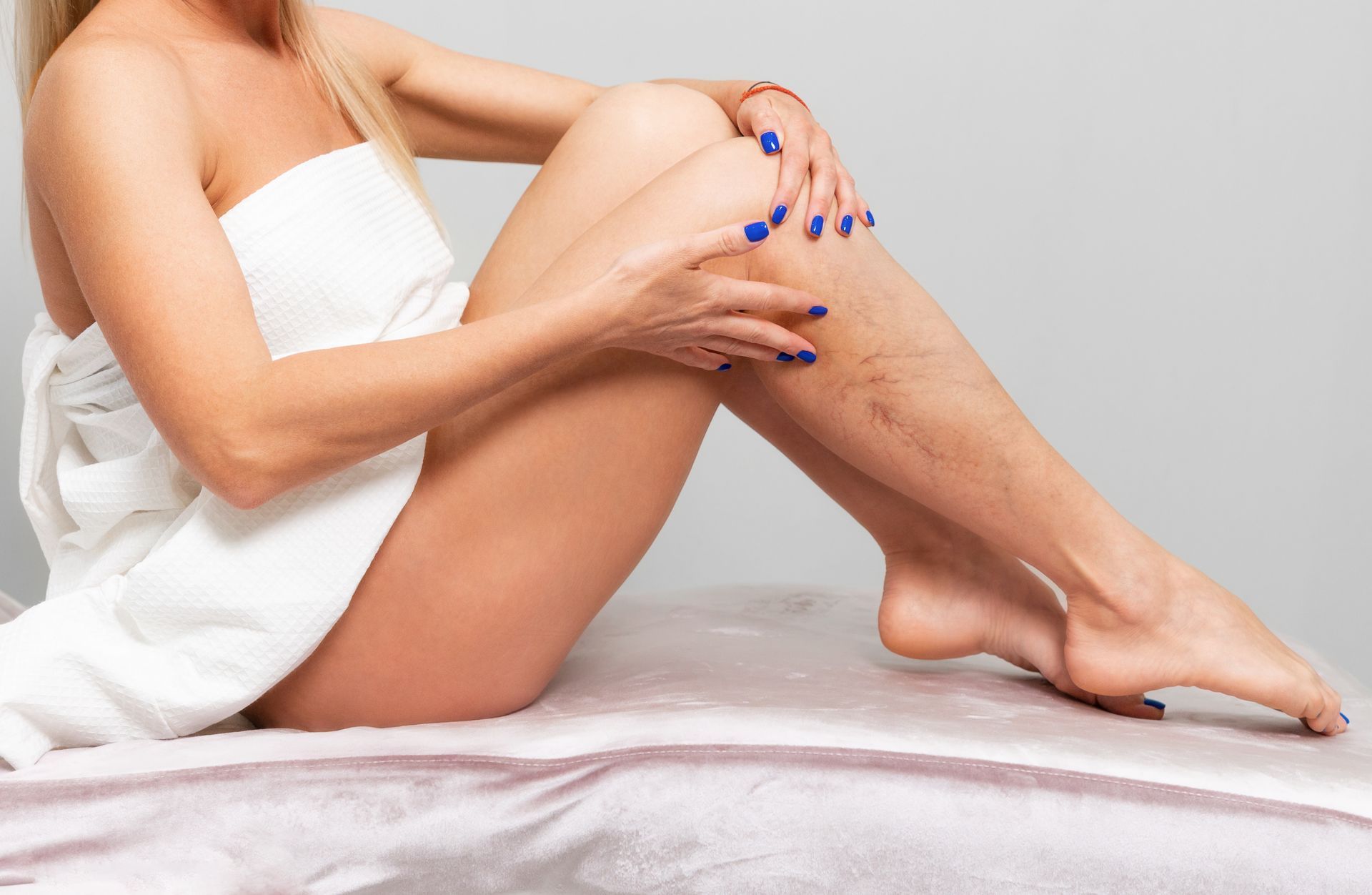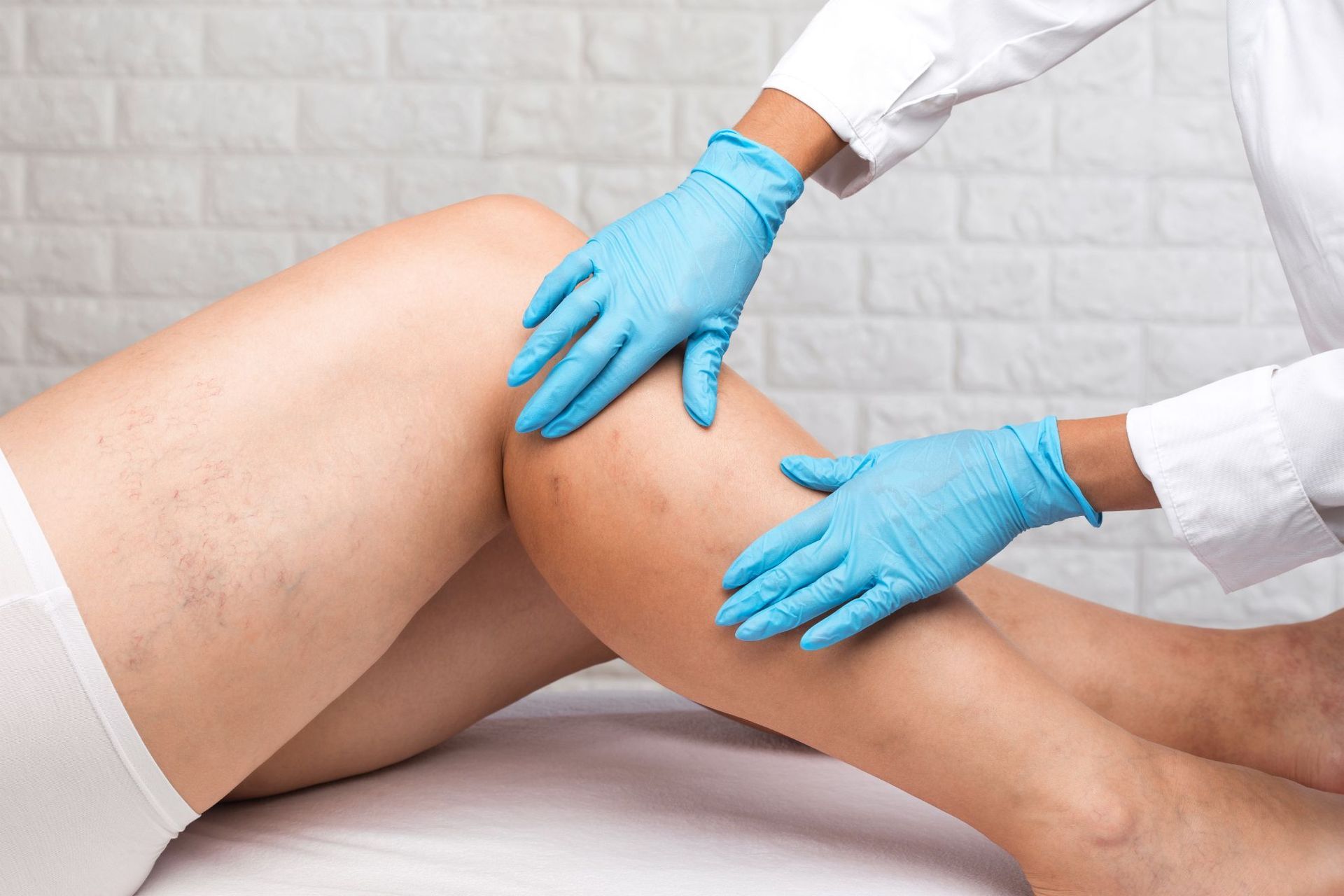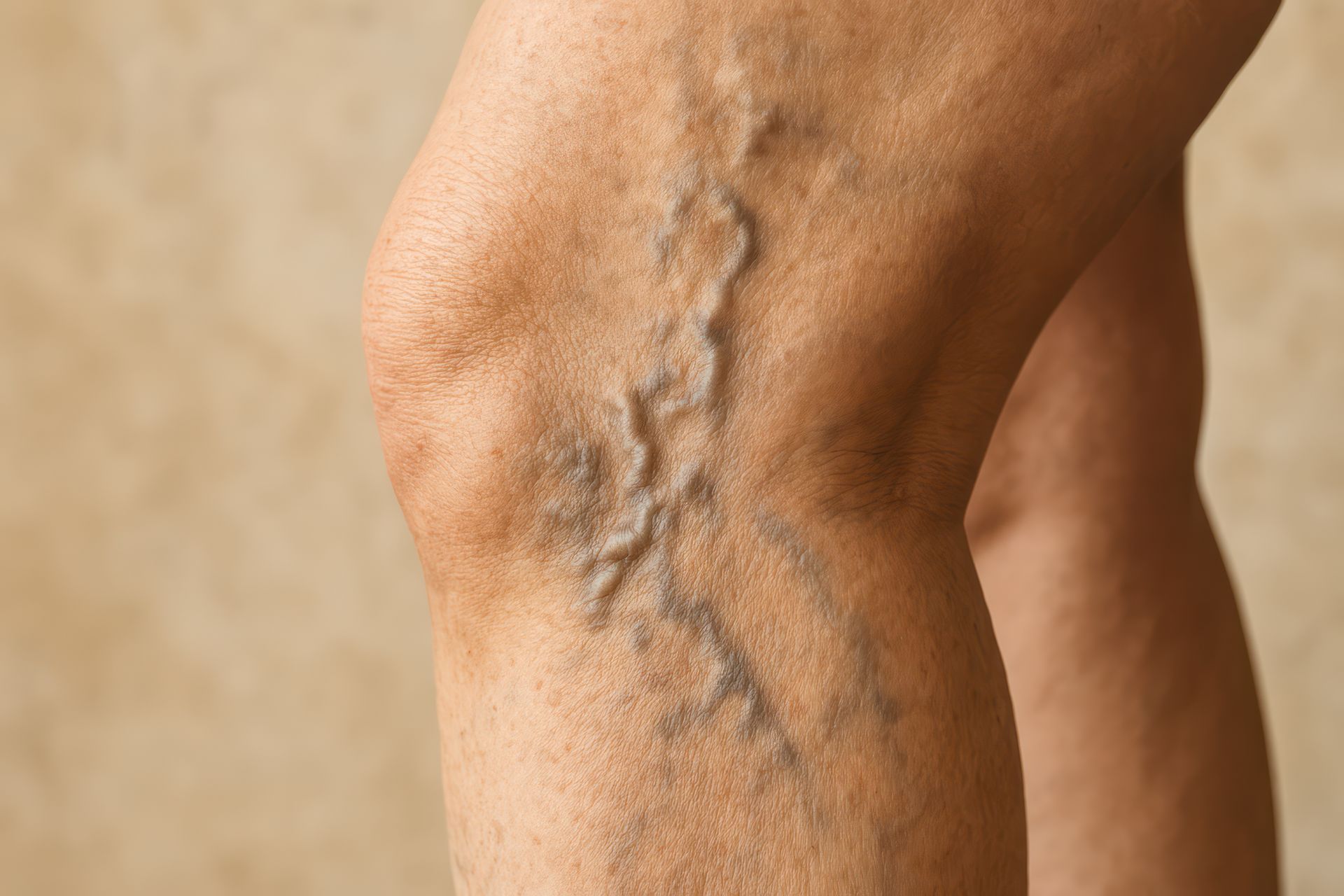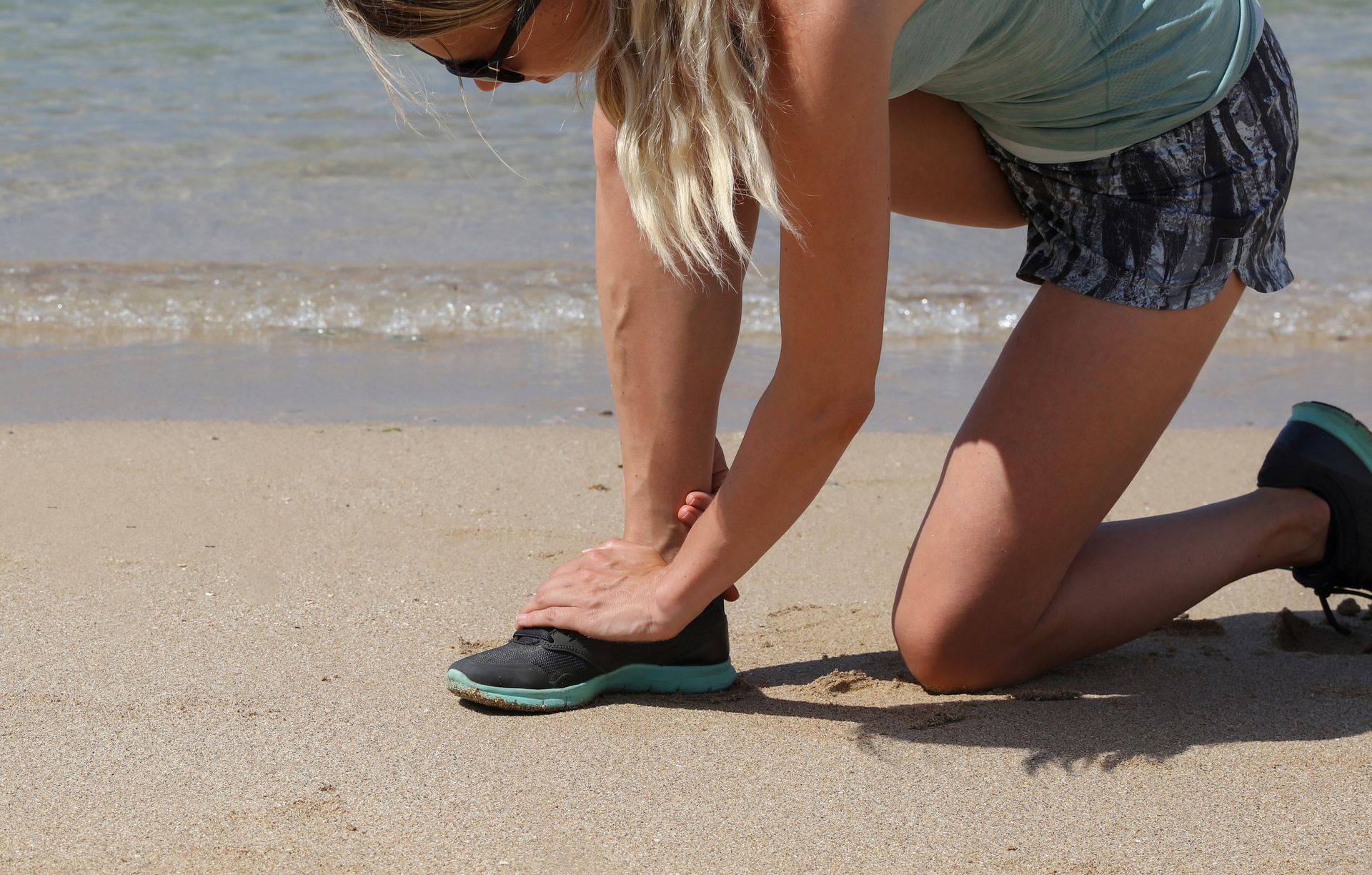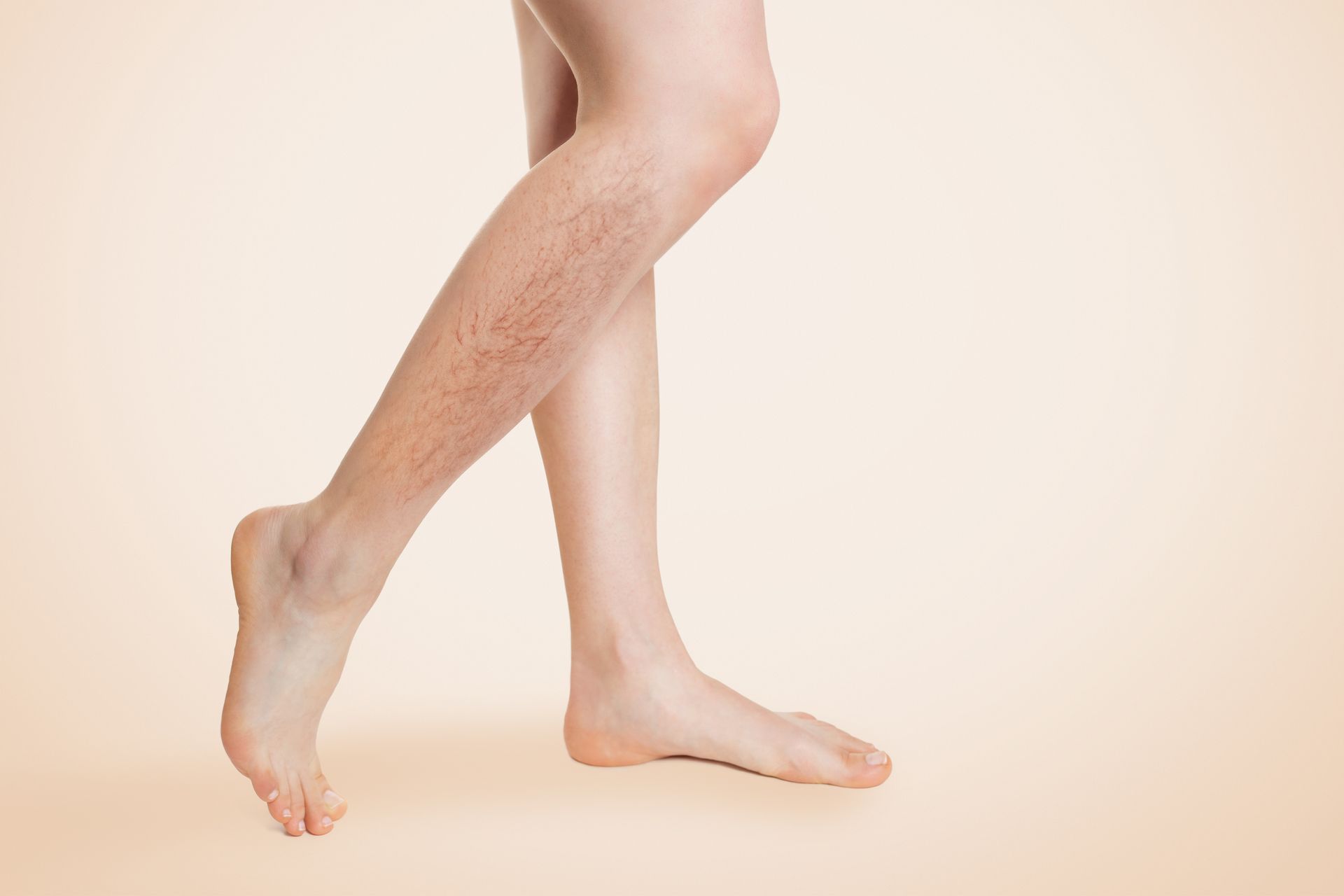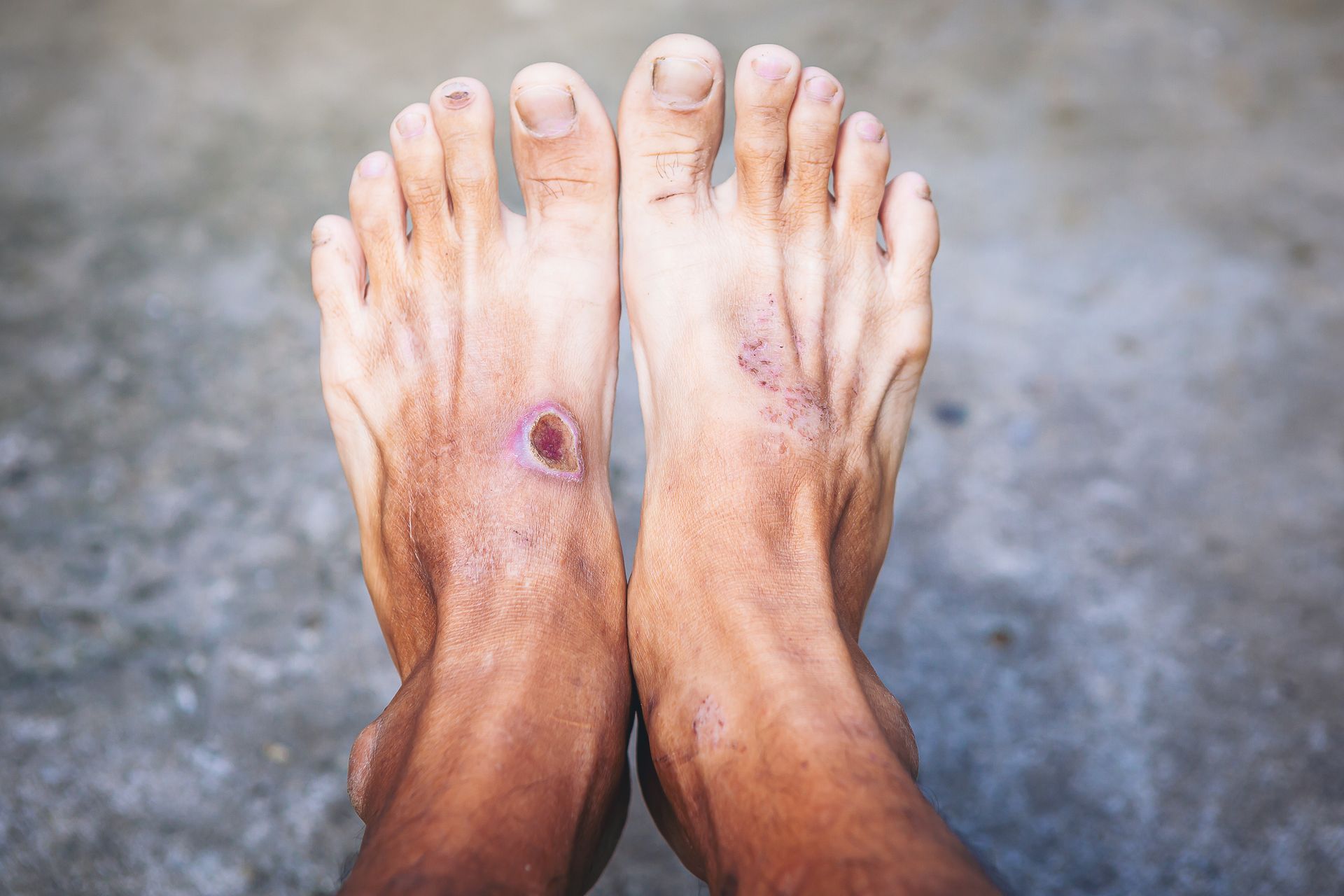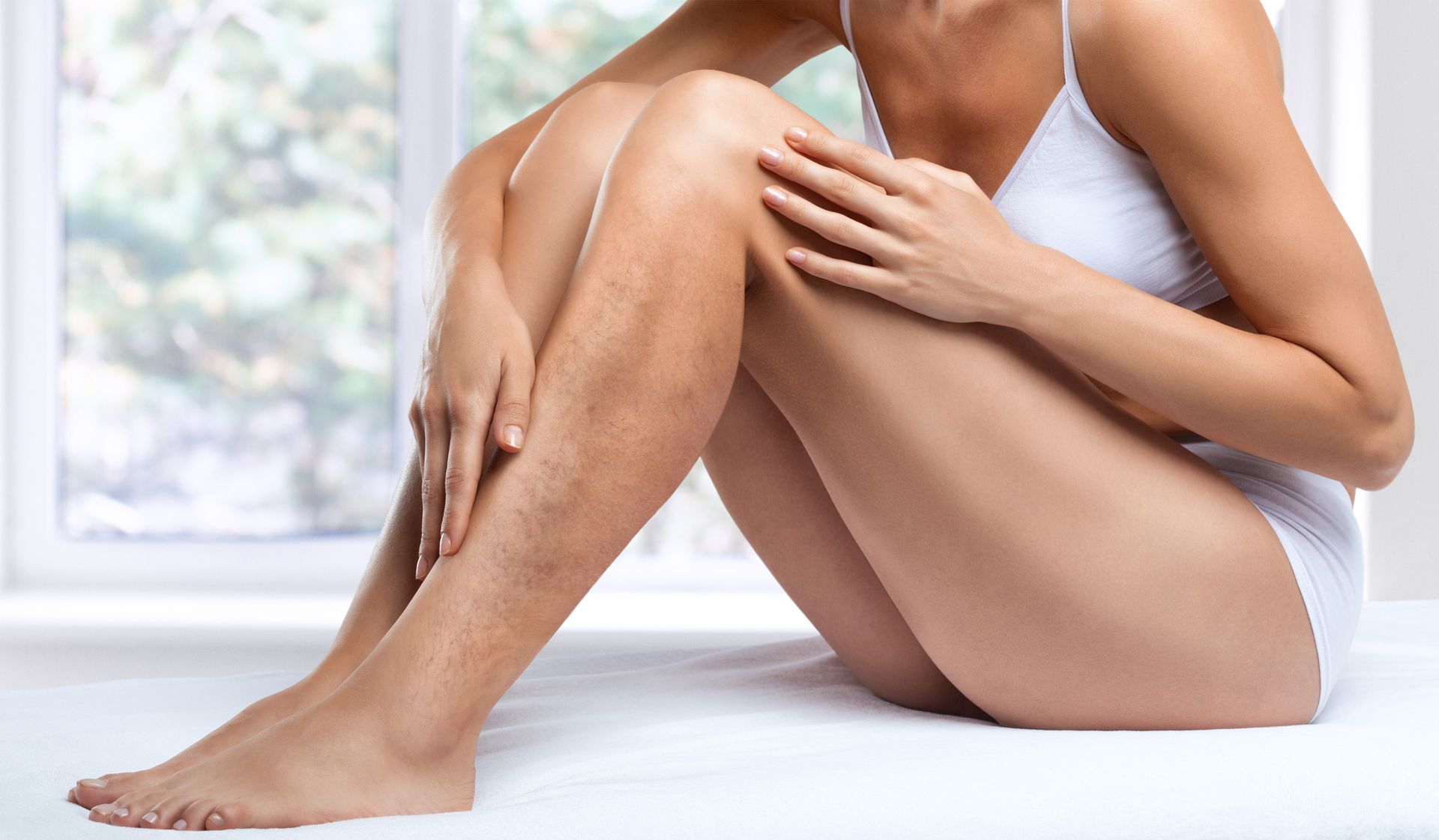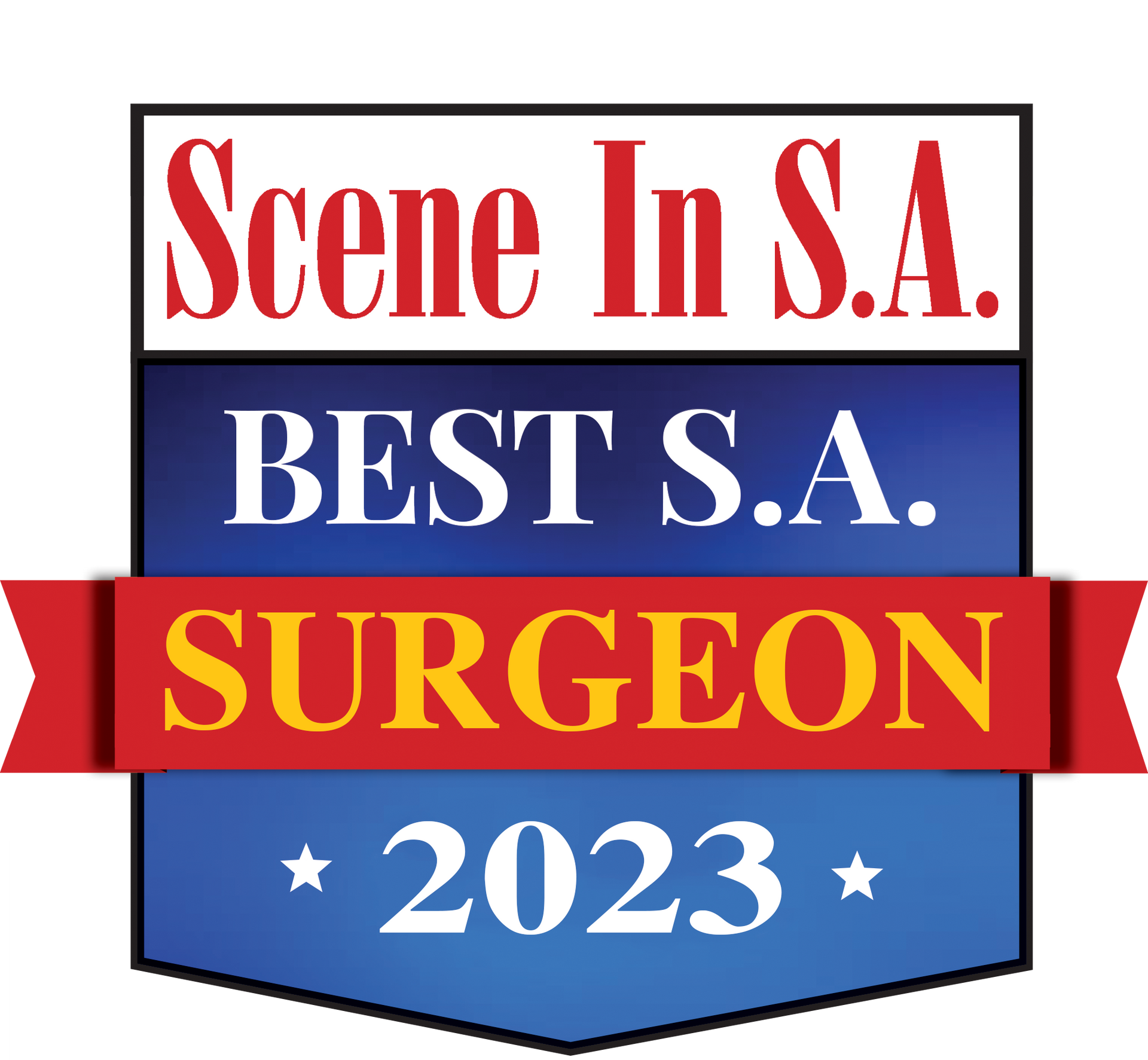The Role of Sclerotherapy in Vein Treatment: What You Need to Know
Curious about those tiny injections that make spider veins disappear like magic? Sclerotherapy has been the gold standard for vein treatment for decades, and for good reason! This minimally invasive procedure offers remarkable results with minimal downtime. If you're considering treatment for those troublesome veins, understanding sclerotherapy could be your first step toward clearer, more comfortable legs.
At The Vein Institute, we perform thousands of sclerotherapy treatments annually, helping patients regain confidence and comfort. Let's dive into everything you need to know about this popular vein treatment option.
What Exactly Is Sclerotherapy?
Sclerotherapy is a medical procedure used to eliminate spider veins and smaller varicose veins. During this treatment, a solution (called a sclerosant) is injected directly into the problematic vein using a very fine needle. This solution irritates the lining of the blood vessel, causing it to collapse and stick together. Over time, the body naturally absorbs the treated vein, and blood flow reroutes to healthier veins.
Think of it as closing down a problematic detour in your circulatory system's roadmap—traffic (your blood) simply finds a better route, and the old, inefficient road eventually disappears.
The History of Sclerotherapy: From Then to Now
Sclerotherapy isn't a new kid on the block—its roots trace back to the 1850s! However, the treatment has evolved dramatically since those early days.
The Evolution of Sclerotherapy:
- 1850s-1900s: Early experiments with various irritants to close veins
- 1930s: Development of sodium tetradecyl sulfate (still used today)
- 1960s-1990s: Refinement of techniques and solutions
- 2000s-Present: Advanced formulations, foam sclerotherapy, and ultrasound guidance
Today's sclerotherapy is safer, more effective, and more comfortable than ever before. At The Vein Institute, we use the most advanced sclerosing agents and techniques to deliver optimal results with minimal discomfort.
When Is Sclerotherapy the Right Choice?
Sclerotherapy shines as a treatment option for:
Spider Veins
Those small, web-like veins that appear close to the skin's surface respond exceptionally well to sclerotherapy. In fact, it's considered the treatment of choice for spider veins on the legs.
Small to Medium Varicose Veins
While larger varicose veins might require different approaches, smaller varicose veins (typically less than 3mm in diameter) can be effectively treated with sclerotherapy.
Venous Lakes
These small, blue, soft, raised lesions commonly found on the lips and ears respond well to sclerotherapy.
Hand Veins
For cosmetic concerns about prominent hand veins, sclerotherapy offers excellent results.
Not sure if your veins are suitable for sclerotherapy? At The Vein Institute, our specialists can evaluate your specific condition and recommend the most effective treatment approach for your needs.
The Sclerotherapy Procedure: What to Expect
Wondering what happens during a sclerotherapy session? Let's walk through the entire process from consultation to recovery.
Before Your Treatment: The Consultation
Before any needles come into play, you'll have a thorough consultation with one of our vein specialists. During this appointment, we'll:
- Review your medical history and any medications
- Examine your veins and assess their severity
- Possibly perform an ultrasound to evaluate vein function
- Discuss your treatment goals and expectations
- Create a personalized treatment plan
During Your Sclerotherapy Session
The actual procedure is surprisingly quick and straightforward:
- Preparation: You'll lie comfortably on an examination table, and the treatment area will be cleaned.
- Injections: Using a very fine needle, your doctor will inject the sclerosing solution directly into the targeted veins. You might feel minor stinging or cramping for a few minutes.
- Compression: After the injections, compression pads may be applied to the treated areas before compression stockings are put on.
The entire session typically takes between 15-45 minutes, depending on how many veins are being treated. Many patients describe it as less painful than getting blood drawn!
After Your Treatment: Recovery
One of the biggest advantages of sclerotherapy is the minimal downtime:
- Immediate activities: Most patients return to normal activities the same day
- Compression therapy: You'll need to wear compression stockings for a period (usually 1-3 weeks) as recommended by your doctor
- Walking: Regular walking is encouraged to promote circulation
- Temporary restrictions: You'll need to avoid strenuous exercise, hot baths, saunas, and direct sun exposure for a short period
Post-Treatment Appearance
It's important to have realistic expectations about what your legs will look like immediately after treatment:
- Treated veins may appear more noticeable initially
- Some bruising is normal and temporary
- Larger veins may feel hard or rope-like for a few weeks
- Optimal results typically develop over 3-6 weeks
Most patients require 2-4 treatment sessions spaced 4-6 weeks apart for optimal results, depending on the number and size of veins being treated.
The Science Behind Sclerotherapy: How It Works
For the curious minds wondering exactly how sclerotherapy works at the cellular level:
- Initial contact: The sclerosing agent damages the inner lining of the vein (endothelium)
- Inflammation response: The body responds with controlled inflammation
- Fibrosis process: The vein walls stick together and begin to fibrose (turn into connective tissue)
- Absorption phase: Over weeks, the body's natural cleanup processes absorb the collapsed vein
- Rerouting: Blood flow naturally redirects to healthy nearby veins
It's a perfect example of working with your body's natural processes to eliminate problem veins. The body essentially recycles the components of the treated vein!
Types of Sclerotherapy: Beyond the Basics
Sclerotherapy isn't one-size-fits-all. Several specialized variations may be recommended depending on your specific vein issues:
Liquid Sclerotherapy
The traditional form, using a liquid solution injected directly into small veins. This is ideal for spider veins and very small varicose veins.
Foam Sclerotherapy
For larger veins, the sclerosing agent is mixed with air or a specific gas to create a foam. This allows the solution to displace blood and maintain better contact with the vein walls, increasing effectiveness for larger veins.
Ultrasound-Guided Sclerotherapy
For veins that aren't visible on the surface, ultrasound imaging helps guide the needle to ensure precise placement of the sclerosing agent. This is particularly useful for deeper veins that contribute to visible surface veins.
Visual Sclerotherapy
Used for visible surface veins that can be treated without ultrasound guidance.
At The Vein Institute, our specialists are experienced in all these techniques, allowing us to tailor the approach to your specific needs.
Benefits of Choosing Sclerotherapy
Why has sclerotherapy remained a top choice for vein treatment for decades? The benefits are compelling:
Effectiveness
Studies show success rates of 75-90% for eligible veins when performed by experienced specialists.
Minimally Invasive
No surgery, no general anesthesia, no hospital stay—just quick injections performed in-office.
Quick Procedure
Most sessions take less than an hour, making it easy to fit into your busy schedule.
Minimal Downtime
Return to most daily activities immediately after treatment.
Improved Symptoms
Beyond cosmetic improvements, sclerotherapy can relieve aching, burning, swelling, and night cramps associated with problematic veins.
Long-lasting Results
While new veins may develop over time, the treated veins typically don't return.
Cost-Effectiveness
Compared to surgical interventions, sclerotherapy is generally more affordable while delivering excellent results.
Potential Side Effects and Complications
Like any medical procedure, sclerotherapy comes with potential side effects, though serious complications are rare when performed by experienced specialists:
Common and Temporary Side Effects:
- Bruising: Typically resolves within 1-2 weeks
- Raised red areas: Usually disappear within a few days
- Tiny skin sores: May occur at injection sites and heal without scarring
- Darkened skin (hyperpigmentation): Usually fades within 3-12 months
- Multiple tiny red vessels: May develop temporarily at the treatment site
Less Common Complications:
- Allergic reactions: Rare but possible responses to the sclerosing agent
- Inflammation: Sometimes develops around the injection site
- Blood clot formation: Extremely rare when proper techniques are used
- Matting: Development of fine networks of new blood vessels
At The Vein Institute, our commitment to safety and our extensive experience significantly reduce these risks. We'll discuss all potential side effects during your consultation so you can make an informed decision.
Is Sclerotherapy Right for You?
While sclerotherapy is effective for many people, it's not the perfect solution for everyone. Factors affecting suitability include:
Good Candidates for Sclerotherapy:
- People with spider veins or small to medium varicose veins
- Those experiencing mild symptoms like aching or swelling
- Individuals with realistic expectations about results
- People who can wear compression stockings as directed
When Alternative Treatments May Be Better:
- Very large, bulging varicose veins (may respond better to other treatments)
- Pregnancy (should wait until after delivery)
- History of blood clots or clotting disorders
- Certain medical conditions
During your consultation at The Vein Institute, we'll carefully evaluate your specific situation to determine whether sclerotherapy or another treatment option would serve you best.
Preparing for Sclerotherapy: Tips for Success
If you've decided to proceed with sclerotherapy, these tips can help ensure the best possible experience and results:
Before Your Appointment:
- Avoid shaving or applying lotions to your legs for 24 hours before treatment
- Bring comfortable shorts to wear during the procedure
- Purchase compression stockings in advance (we can recommend the right type)
- Stay hydrated in the days leading up to treatment
- Avoid blood-thinning medications as directed by your doctor
What to Wear:
- Loose-fitting clothes to accommodate compression stockings afterward
- Comfortable shoes that are easy to slip on while wearing compression stockings
Sclerotherapy vs. Other Vein Treatments
How does sclerotherapy compare to other common vein treatments? Here's a quick comparison:
Sclerotherapy vs. Laser Vein Treatment
Sclerotherapy:
- Better for larger spider veins and small varicose veins
- Often more cost-effective
- May require fewer sessions
- Slightly more discomfort during treatment
Laser Treatment:
- Ideal for very small spider veins and facial veins
- No needles required
- Better for patients with needle phobia
- May be preferred for certain skin types
Sclerotherapy vs. Endovenous Procedures
Sclerotherapy:
- Better for smaller, surface veins
- Less invasive
- Lower cost
- Quick in-office procedure
Endovenous Procedures (Laser/RF Ablation):
- Better for larger varicose veins
- Addresses underlying venous insufficiency
- Longer-lasting results for certain conditions
- May be covered by insurance more often
At The Vein Institute, we offer all these treatment options, allowing us to recommend the most appropriate approach—or combination of approaches—for your specific needs.
Aftercare: Maximizing Your Sclerotherapy Results
The care you take after treatment significantly impacts your results. Follow these guidelines for the best outcome:
First 48 Hours:
- Wear compression stockings as directed
- Walk regularly throughout the day
- Avoid strenuous exercise
- Skip hot baths, hot tubs, and saunas
- Avoid direct sun exposure to treated areas
First Two Weeks:
- Continue compression therapy as recommended
- Gradually return to normal activities
- Keep follow-up appointments
- Apply sunscreen to treated areas when outdoors
Long-term Care:
- Maintain a healthy weight
- Stay active with regular exercise
- Elevate legs when possible
- Consider wearing compression during high-risk activities
- Attend follow-up appointments to assess results and address any new veins
Frequently Asked Questions About Sclerotherapy
Does sclerotherapy hurt?
Most patients report minimal discomfort—a slight burning or stinging sensation that lasts just a few minutes. The needles used are very small, and we can apply a topical numbing cream if you're concerned about discomfort.
How many sessions will I need?
Most patients require 2-4 sessions spaced 4-6 weeks apart for optimal results. The number depends on the extent and size of the veins being treated.
Is sclerotherapy covered by insurance?
Insurance coverage varies. Generally, if the veins are causing symptoms (pain, swelling, etc.) rather than just cosmetic concerns, treatment may be covered. Our office staff can help you verify your coverage.
When will I see results?
Small spider veins may disappear immediately, while larger veins typically take 3-6 weeks to respond fully. Complete results may take up to three months.
How long do results last?
Once a vein is treated, it's gone for good. However, new veins can develop over time, particularly if you have risk factors like genetics or occupational hazards. Many patients enjoy results that last for years.
Can sclerotherapy be combined with other treatments?
Absolutely! At The Vein Institute, we often recommend combination approaches for comprehensive vein care. For instance, endovenous ablation might address underlying venous insufficiency, while sclerotherapy treats the visible surface veins.
Why Choose The Vein Institute for Sclerotherapy
When considering sclerotherapy, the provider's experience and expertise matter significantly. At The Vein Institute, we offer:
- Board-certified specialists with extensive training in vascular medicine
- Thousands of successful procedures performed annually
- State-of-the-art technology for diagnosis and treatment
- Comprehensive approach to vein health, not just isolated treatments
- Personalized care plans tailored to your specific needs
- Exceptional patient satisfaction with consistently high reviews
Our team at The Vein Institute is committed to helping you achieve healthier, more comfortable, and more attractive legs through the safest and most effective treatments available.
Take the Next Step Toward Vein-Free Legs
If you're tired of hiding your legs or dealing with the discomfort of problematic veins, sclerotherapy at The Vein Institute could be the solution you've been seeking. This time-tested, minimally invasive procedure has helped countless patients regain confidence and comfort with beautiful results.
Ready to learn more? Contact The Vein Institute today at www.theveindr.com to schedule your consultation. Our experienced team is ready to answer your questions and help you determine if sclerotherapy is the right choice for your vein concerns.
Your journey to healthier legs is just one appointment away!
Keywords: sclerotherapy, vein treatment, spider vein treatment, varicose vein treatment, minimally invasive vein procedure, The Vein Institute
Disclaimer: The information provided on this blog is for general informational purposes only and is not intended as, and should not be considered, medical advice. All information, content, and material available on this blog are for general informational purposes only. Readers are advised to consult with a qualified healthcare professional for medical advice, diagnosis, or treatment. The author and the blog disclaim any liability for the decisions you make based on the information provided. Always seek the advice of your physician or other qualified health provider with any questions you may have regarding a medical condition.
